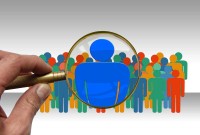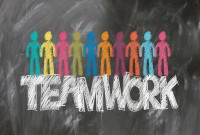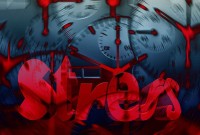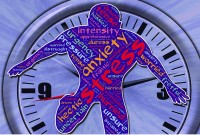- Home
- Business Processes
- Industry Knowledge
- Aerospace Industry
- Automotive Industry
- Banking Domain
- BFSI Industry
- Consumer/ FMCG Industry
- Chemicals Industry
- Engineering & Construction
- Energy Industry
- Education Domain
- Finance Domain
- Hospitality Domain
- Healthcare Industry
- Insurance Domain
- Retail Industry
- Travel and Tourism Domain
- Telecom Industry
- Leadership Skills
- eLearning
- Home
- Leadership
- Leadership Styles
- Types of Business Change
Types of Business Change
Change is a complex phenomenon. There are different types of changes that are going on around us. Listed in this article are twelve areas in which change arises and bring some classification to it. However one may classify the change, the various heading is always interrelated. The change could be triggered by market changes, technological changes, or organizational changes.
There are several models of organizational change. A model is an integrated way of explaining why and how change takes place, based on a known and acceptable basic explanation (theory) of relationships of several aspects involved. It would be obvious that there can be different ways of explaining the change, depending on what theory we follow or use.
1. Trickle-Down Model
Two contrasting models of change are the "trickle-down" model vs. "identity search" model. In the trickle-down models of change, the change is driven by the elite group. The organizational change occurs because the top management takes a decision and adopts some new ways (technology, systems, structure, etc.) and others follow it.
2. Identity Search Model
According to the Identify Search Model, the urge to develop one's own uniqueness and identity will make the group or individuals accept change.
3. Internal Change
Another way is to look at change is to look for the external or internal forces as determinants of changes. Change can be a result of internal factors like changes in the direction and objectives and ideology of a company or a workforce.
4. External Change
The changes, which occur within the business, can result from external environments such as the development of technology, globalization of markets, or new competitors on the market.
5. Adaptation Model
Business models change as managers engage in more mundane adaptation in response to external changes. The adaptation model emphasizes the role of external factors (for example a new government policy, or competitive environment) in producing a change in organizations (more emphasis on quality, restructuring, etc.). To respond positively to environmental changes, the person must adapt.
6. Proactive Model of Change
According to the proactive model, the explanation comes from within the organization (the decision of the organization to set an example, to be a leader, to anticipate the future) and act and change itself in response to such an internal urge. Companies that take a proactive approach to change are often trying to avoid a potential future threat or to capitalize on a potential future opportunity. Corrective action was being taken before a market decline or before technology became obsolete. Positive action was being taken to seize competitive advantage before someone else did.
7. Structural Model of Change
Yet another explanation of organizational change may lie in the emphasis on the structure or the process. Structural change refers to a dramatic shift in the way a country, industry, or market operates. Successful change, according to the structure model, would require preparing the necessary structural details (technology, design of the organization, systems), and introduce them systematically.
8. Process Model of Change
The process of change entails creating the perception that a change is needed, then moving toward the new, desired level of behavior and, finally, solidifying that new behavior as the norm. People will also change, according to the process model, successful change can be planned by helping people to develop process competencies (ways of planning, decision-making, problem-solving, collaborating, communicating, etc.), and then people will find new ways of organizing, etc.
9. Adaptive Change
Adaptive change requires new learning for problem definition and solution implementation. Adaptive change requires auditing of existing systems, roles, and responsibilities. This process can often result in essentially rebuilding the entire company by redefining job descriptions, consolidation, elimination of overlap, and creating greater efficiencies. This involves the reimplementation of a change in the same organizational unit. Adaptive change is not considered threatening.
10. Innovative Change
An organization needs to constantly innovate to succeed. Innovation is about making things better, faster, or cheaper. Dynamically continuous innovation affects the way in which the company adapts to changing market conditions. This involves changes that are generally new and unfamiliar. The innovative changes create a kind of uncertainty and fear in organizations.
11. Radically Innovative Change
Radical innovation is an invention that destroys or supplants an existing business model. Radical innovation is the long-term growth strategy for revolutionary business transformation. The concept of radical innovation is about leveraging core competencies for the future and this is the most intimidating type of change. This type of change is most resisted in organizations. Radical innovation creates such a dramatic change in processes, products, or services that they transform existing markets or industries, or create new ones. Implementation of a radical change in an organization requires a long-term strategy.
12. Reactive Change
This is a change brought about by a sudden or unplanned event. Whereas the planned change is a systematic, deliberate change in the way part or all of an organization functions. In planned change the focus is on processes, people, or technology; and one person, a project team, a department, or the entire firm can be involved in the change process.
Related Links
You May Also Like
-
Participative leadership is one of the most effective styles and creates higher productivity, better contributions from group members, and increased group morale. The democratic leadership style consists of the leader sharing the decision-making abilities with group members by promoting the interests of the group members. Learn more about this leadership style and situations when it is effective.
-
A manager or an employee in an organization who is experiencing a high level of stress may develop high blood pressure, ulcers, irritability, difficulty in making routine decisions, loss of appetite, accident proneness, and the like. These can be subsumed under three general categories, physiological, psychological, and behavioral symptoms. Stress can give rise to a number of changes.
-
As we know change is inevitable as market expectations are not static, new technology is constantly being developed, and organizational responses are inevitable to these sequences. It is a simple matter of business evolution. If every manager and every employee could have some understanding of the triggers of change and their relationships with each other, then the acceptance to change would be easier.
-
Thinking & Problem Solving Skills
Today's dynamic business world demands that you make decisions that significantly boost productivity and drive competitive advantage. But how do you know whether a decision will benefit the organization? And how do you know that the decisions are based on rational and statistical reasoning? Explore how to become a dynamic problem solver with the skills to make accurate decisions.
-
Teams are part of the modern organizational culture. Whether you are a team leader or a team member, having a better understanding of how teams work, and being able to identify where the team is in the process, is a critical part of ensuring the team is ultimately successful. Start with the basics and understand what a team is and what role they play in an organization.
-
Symbolic Interaction and Social Change
George Herbert Mead, an American philosopher, affiliated with the University of Chicago founded the theory of symbolic interactionism. A major aspect of this is that people interact by symbols both verbal and non-verbal signals and every interaction makes a contribution to the mental make-up of the mind thus every interaction with someone, changes you and you go away a different person signifying that humans and change go together.
-
Team Development by Building Trust
As your team begins to work together, you need to establish a way each team member can exchange ideas and build mutual trust. Successful groups are built on trust and collaboration. A free exchange of ideas, in an open environment, will allow your team to get to know each other and enable you to check on how they work together. Learn some tips to help build team trust and establish personal bonds.
-
Stress is an essential part of our life. No one can live without stress. Stress can be beneficial as well as harmful. Stress as a positive influence adds excitement and hope while as a negative influence it can result in destructive feelings, anger, and depression. Although the general orientation to stress is to consider unfavorable outcomes, yet one must have observed that stress experiences may also facilitate the development of effective and varied coping behavior, increased personal resources, and lead to a sense of competence in development. Stress at a moderate level is not only inevitable but may be useful for physical and mental well-being.
-
Evidence of the medically damaging symptoms of work stress necessitates applying the treatment of stress management. Stress management is increasingly drawing the attention to the management experts not only as a remedial measure but also as a way to resource management. If the workplace can be made a little more lovable the increase in the achievement of the organization may be much time more. If group stress can be removed by introducing group discussions and recreational facilities a long-lasting team spirit may get developed.
-
Change is a complex phenomenon. There are different types of changes that are going on around us. Listed in this article are twelve areas in which change arises and bring some classification to it. However one may classify the change, the various heading is always interrelated. The change could be triggered by market changes, technological changes, or organizational changes.
Explore Our Free Training Articles or
Sign Up to Start With Our eLearning Courses

About Us
Learning
© 2023 TechnoFunc, All Rights Reserved










